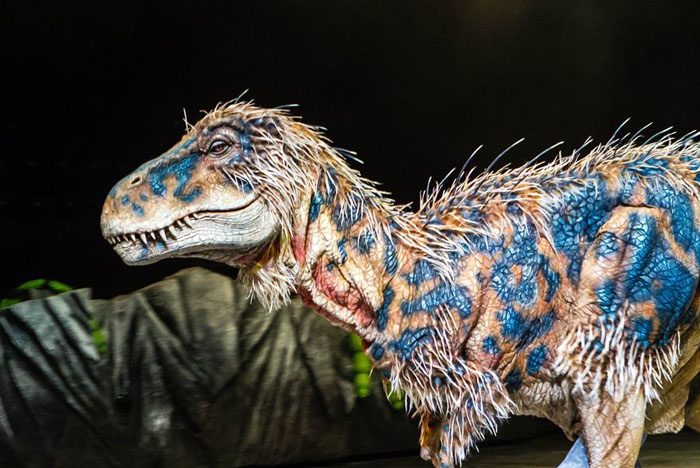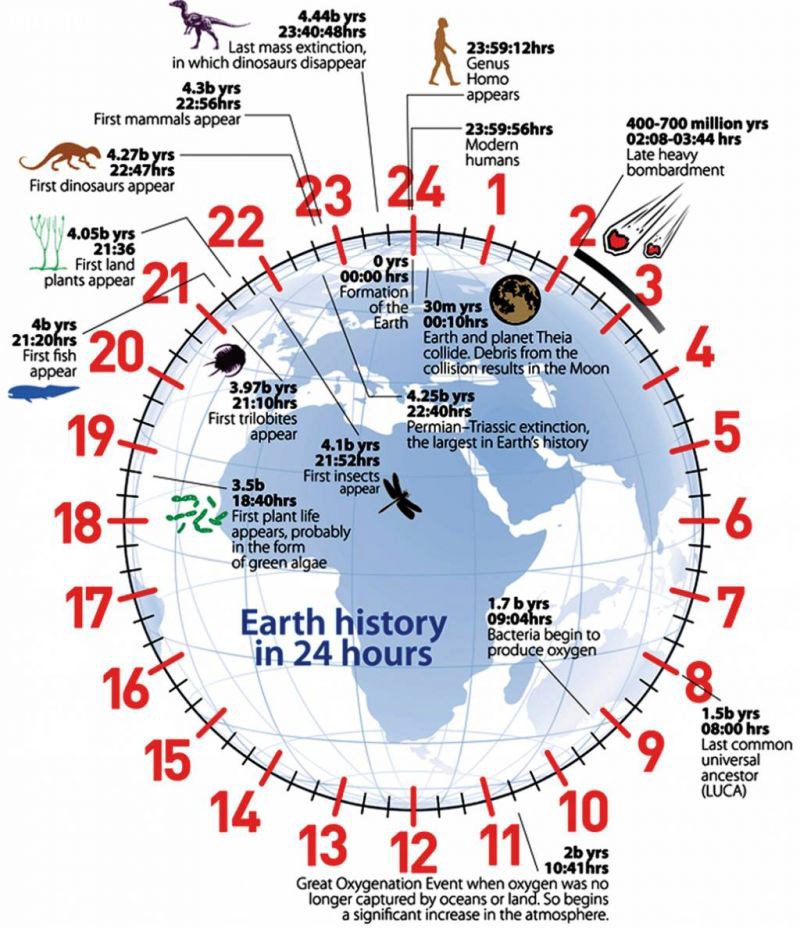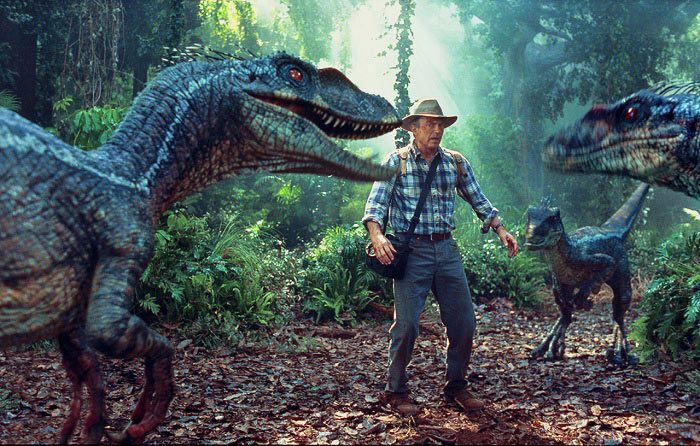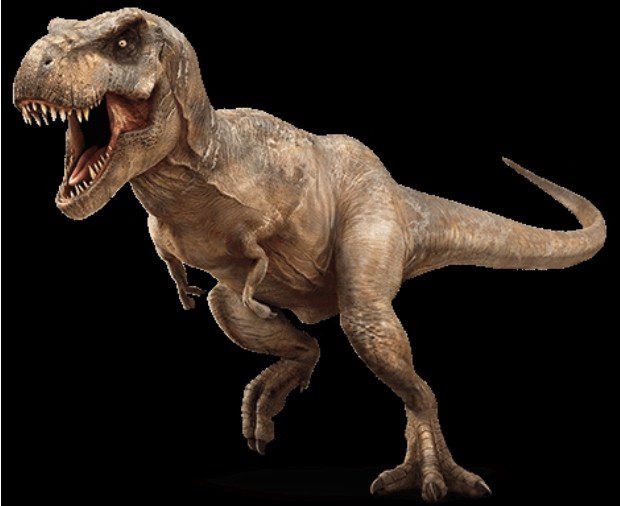The list below explores some common misconceptions about dinosaurs and what we know about them, as compiled by NewScientist magazine.
Mistake 1 – Dinosaurs Were Green and Scaly

Humans believe that dinosaurs were green and scaly because they assumed that dinosaurs must resemble large modern reptiles like crocodiles. In reality, some fossils have preserved pigments, showing that not all dinosaurs were brown, black, or green. They may have had many more vibrant colors.
Some of them could even camouflage, depending on their habitats. Different species of dinosaurs would have had various textures and appearances on their skin.
Mistake 2 – Mammals Only Evolved After Dinosaurs Went Extinct
Tiny mammals lived in the shadows of dinosaurs for over 150 million years, occupying small niches as nocturnal creatures, weighing only about 2 grams. The ancestors of mammals actually appeared before the dinosaurs.
However, they maintained their small size until about 65 million years ago. The decline of dinosaurs created niches for larger mammals. Most species of mammals we see today evolved after this period.
Mistake 3 – Dinosaurs Went Extinct Because Mammals Ate Their Eggs
The most fearsome enemies of dinosaurs were the smaller dinosaurs. Most mammals at that time were too tiny to eat the eggs of these gigantic reptiles.
Mistake 4 – A Single Meteorite Caused Dinosaur Extinction
A meteorite about 10 km wide struck the shallow waters of what is now the Yucatan Peninsula in Mexico 65 million years ago. It created the Chicxulub crater, which is about 180 km wide. However, there is no convincing evidence that all non-avian dinosaurs did not survive this catastrophe. Even now, we are still unsure why dinosaurs went extinct. The impact may have only killed dinosaurs near the crater. But it could also have triggered gigantic tsunamis, acid rain, or dust clouds that covered the Earth for months or even decades. The combination of all these factors may have led to the dinosaurs’ disappearance.
Mistake 5 – Dinosaurs Went Extinct Because They Were Evolutionarily Unsuccessful

Dinosaurs survived for over 150 million years, so they cannot be considered unsuccessful. Human ancestors only appeared about 6 million years ago, and Homo sapiens has a history of no more than 200,000 years.
Dinosaurs outcompeted other species during their era but ultimately lost the battle against the impact of the meteorite.
Mistake 6 – All Dinosaurs Died Out Around 65 Million Years Ago
Birds evolved about 150 million years ago. Most experts believe they originated from small theropod dinosaurs.
Mistake 7 – Dinosaurs Were Slow and Sluggish

Paleontologists initially thought that dinosaurs must have been slow and sluggish to lose in the ‘evolutionary race’ against birds and mammals. However, modern studies have found no evidence that they were slow-moving creatures dragging their tails behind them.
Mistake 8 – All Large Terrestrial Reptiles from Prehistory Were Dinosaurs
Large terrestrial reptiles reached lengths of 5 meters before the first dinosaurs appeared (around 230 million years ago). Some—like the sail-backed Dimetrodon, which thrived in North America during the Permian period (290 to 240 million years ago)—are related to dinosaurs but are not true dinosaurs.
Mistake 9 – Marine Reptiles Like Ichthyosaurs Were Also Dinosaurs
Some gigantic marine reptiles lived alongside dinosaurs, but all true dinosaurs were land animals.
Marine crocodiles, like other crocodiles, are considered relatives of dinosaurs, and other large extinct marine reptiles (such as plesiosaurs, pliosaurs, mosasaurs, and ichthyosaurs) are the same.
Mistake 10 – Flying Reptiles Were Dinosaurs
Flying reptiles known as pterosaurs first appeared shortly after dinosaurs and went extinct alongside them. The largest of these were the size of small airplanes. However, despite being close relatives, they are not true dinosaurs.
Mistake 11 – The T. rex’s Front Limbs Were Weak and Useless

You may have heard someone say that the very small front limbs of the T. rex were useless, but that is a completely false notion. The dinosaur had a very strong muscular system, and it could move while carrying more than 430 pounds (about 195 kg) on each of its front limbs.
Mistake 12 – Predatory Dinosaurs Were Larger Than Humans
Most of us had never heard the name of this predatory dinosaur before the Jurassic Park movie came out. The film created the impression of this dinosaur as a large, scaly, extremely intelligent predator.
In reality, this dinosaur is not much larger than a big dog, and its body was covered in feathers. This dinosaur looks more like an angry large chicken than a gigantic animal with smooth skin.
Mistake 13 – Dinosaurs Lived in Tropical Climates

In all the exhibits displaying dinosaur specimens, we see these creatures living in lush, wet tropical forests. However, this is not entirely true; many dinosaur species lived in cold climates. Therefore, you might see a T. rex through the snow.
Mistake 14 – All Dinosaurs Were Huge
When you think of dinosaurs, you might assume that they were all very large. T. rex reached lengths of up to 12 meters, and the long-necked Brachiosaurus stood as tall as 13 meters. But this is not the case for all dinosaurs. Contrary to popular belief, not all dinosaurs were giants. In fact, many of them were quite small. Some were even the size of birds we have today! One small dinosaur is the Microraptor. This tiny dinosaur was the size of a crow.
Mistake 15 – Dinosaur Sounds Were Like Those in Movies
Dinosaurs probably did not make sounds like those portrayed in movies. In fact, we really do not know what sounds they would have made. Fossils rarely preserve soft tissues like vocal cords. This makes it difficult for paleontologists to accurately determine the sounds dinosaurs produced.
Scientists can make educated guesses that dinosaur sounds might have been closer to those of birds and crocodiles, as they are the closest living relatives of dinosaurs. Researchers have created models based on fossil skulls. These models suggest that dinosaurs may have produced low-frequency rumbling sounds or bird-like calls.


















































